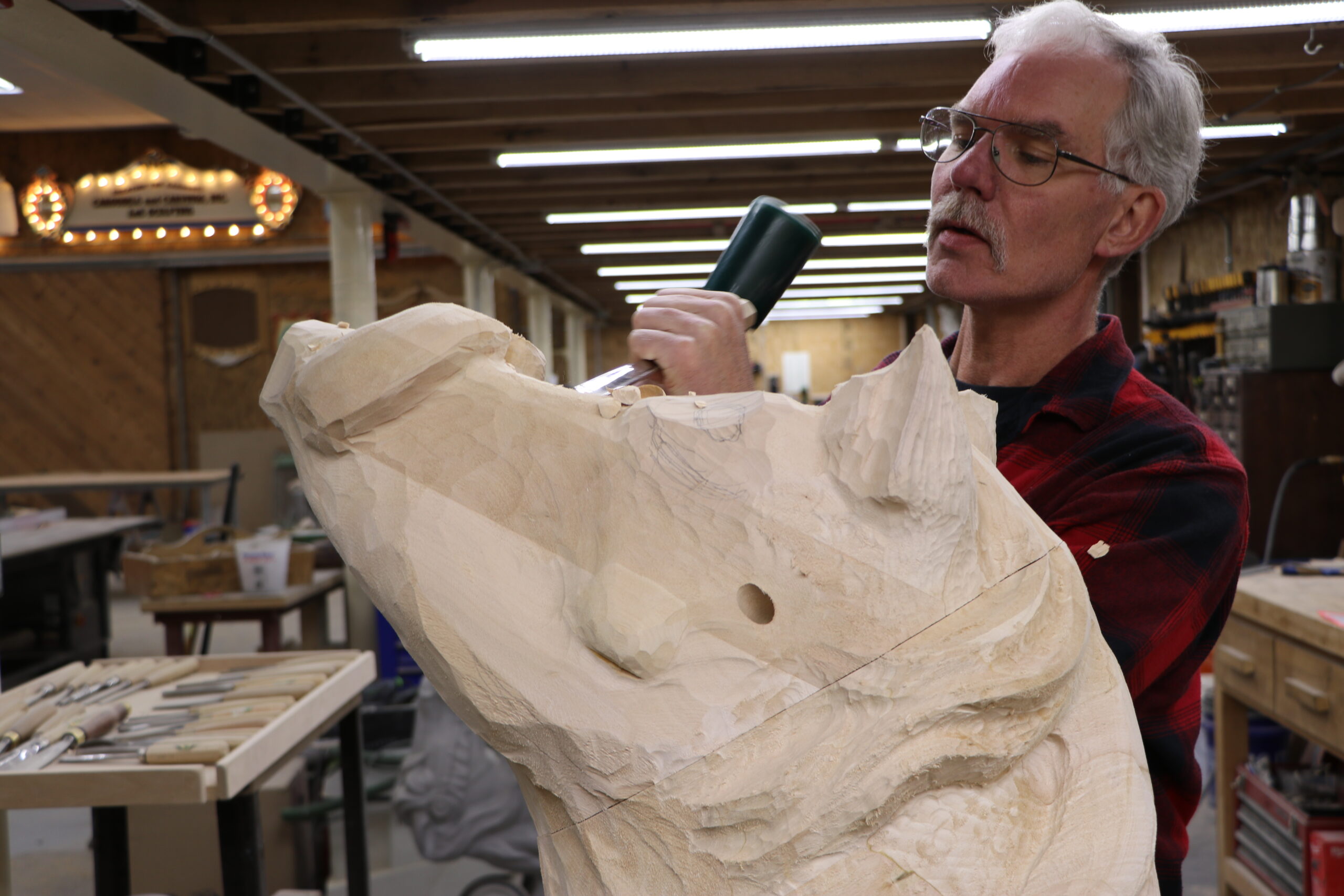The National Endowment for the Arts announced the NEA National Heritage Fellows today, and two artists from the Midwest have been recognized for their contributions to the field. Todd Goings, a skilled carousel carver and restoration expert, and Bril Barrett, a tap dancer, teacher, and historian, are among the 10 deserving recipients this year.
Since 1982, the NEA has been awarding this lifetime honor to recognize individuals committed to preserving and fostering diverse cultural traditions in our nation. Each fellow gets a $25,000 award, and they’ll be celebrated in Washington, DC, in the fall of 2024.
Meet the Midwestern Awardees

Bril Barrett, Tap Dancer from Chicago, Illinois
Bril Barrett is a Chicago-based tap dancer, teacher, and historian. Born and raised in North Lawndale on the West Side and now based in the South Side’s Bronzeville, his four-decade career is rooted in place and crosses time.
Tap was created by enslaved Black people who, when drums were made illegal due to the instrument’s role in resistance, communicated by making rhythms with their bodies instead. These rhythms were passed on in clandestine improvisation circles known as “shouts” or “ring shout,” one of the few West African prayer practices to survive the Middle Passage. It is in this tradition that Barrett learns and teaches.
Barrett fell in love with tap at age four thanks to a program offered by his first teacher, Carlton Smith. After the program ended, Barrett’s mother committed to continuing the lessons, riding with him two hours on the Red Line each way—where Barrett met his primary mentor, Ayrie “Mr. Taps” King.
Barrett joined a long line of dancers who came up “shedding wood” on street corners. After winning grand prize in 1988’s Search for Chicago’s Tap Dance Kid, he toured with companies such as Riverdance and Aaron Tolson’s Imagine Tap. During that time, he learned from several early 20th-century legends of tap, including Dr. Jimmy Slyde, Dr. Bunny Briggs, and Dr. Leonard Reed.
Barrett soon realized that many audiences didn’t know tap the way he had learned it. They might know Shirley Temple or Bill “Bojangles” Robinson, but did they know Robinson’s teacher, Alice Whitman? Did they know about tap as resilience, or resistance? He began to include a history lesson in every class he taught, recounting stories given by his teachers in turn.
With co-founders Jumaane Taylor and Martin ‘Tre’ Dumas III, Barrett created the Making A Difference Dancing Rhythms Organization (M.A.D.D. Rhythms) in 2001 to provide a place for young people to learn and grow. M.A.D.D. Rhythms is now a leading tap collective worldwide, developing a partnership with Bronzeville’s historic Harold Washington Cultural Center to provide affordable arts education and mentorship to Chicago youth.
In 2020, Barrett was awarded the Chicago Dancemakers Forum’s Lab Artist Fellowship, and in 2022 he received the Helen Coburn Meier and Tim Meier Foundation for the Arts Achievement Award. M.A.D.D. Rhythms is a part of the International Association of Blacks in Dance’s 2023-24 FRWD cohort, as well as the Chicago Black Dance Legacy Project’s 2023-24 cohort.
Barrett’s pedagogy of shared improvisation for social-emotional learning shows his students that their lives and selves matter. His circles weave past, present, and future to pass on our history in the way it was created—in the rhythm of our breath, and bodies, and feet.

Todd Goings, Carousel Carver and Restorationist from Marion, Ohio
Master carousel carver and restorationist Todd Goings has worked for 35 years to keep the art of American carved wooden carousels alive. Built in a handful of master artisan workshops from the 1880s to the 1930s, wooden carousels are participatory folk-art environments that set whimsical carved animals to music and movement in custom-built mechanical frames. Of America’s several-thousand original wooden carousels, just 150 remain. Goings has worked on many of them, and, along the way, has revived the American carousel workshop for a new century.
Raised in the rural village of Caledonia in North Central Ohio, Goings came to carousels through an early passion for woodworking, with jobs in cabinetry, millwork, patternmaking, and eventually, woodcarving. By the 1980s, the sad state of America’s wooden carousels had sparked a revival of carousel conservation across America which, in turn, demanded a rebirth of traditional carousel arts. Goings’ wide-ranging woodworking training was destiny. “It chose me,” he said. “Everything I personally learned, the only place it comes together is on carousels.”
Goings opened Carousels and Carvings—a full-service artisan carousel workshop—in Marion, Ohio, in the 1990s. A century separated from master carousel artists like W.H. Dentzel, Charles I.D. Looff, William F. Mangels, & Marcus Illions, Goings trained himself as a carousel carver through years of restoring the masters’ work. Goings is quick to note that a carousel is more, however, than just a frame for carved menageries: it is an “interactive, rideable piece of art” that keeps a century-old leisure experience alive.
Carousels and Carvings is one of only a handful of shops in the country specializing in restoring and building whole carousels: from the carvings to the frame to custom-built mechanicals. Carousels and Carvings has restored dozens of carousels—including Philadelphia’s Woodside Park Carousel, Coney Island’s B&B Carousel, the Memphis Grand Carousel, and the Hydro Oklahoma Carousel—alongside newly built carousels that expand and update tradition with unusual animals and wheelchair-accessible chariots. Like the past masters, Goings’ work takes years. The time is worth it, he said: “In my career, I’ve never taken a carousel down that hasn’t gone back up.”
Carousels and Carvings provides training and livelihoods to artisans, craftspeople, engineers, and technicians from across North Central Ohio. But Goings’ work doesn’t stop in the shop: every spring, he and his team crisscross the country’s zoos, amusement parks, and fairgrounds for the annual pre-season carousel check-ups that earned him the nickname “the carousel doctor.” For his tireless dedication to keeping carousel traditions alive, Goings’ peers have called him “genius” and “the best in the business.” But for Goings, the magic of the carousel— what makes it all worthwhile—is in its use: it’s folk art you can ride
Maria Rosario Jackson, NEA Chair“Through their dedication to and generous stewardship of their traditions and cultures, these artists and culture bearers carry forward their knowledge and passion to future generations. They offer us the opportunity to see things from different perspectives, help us make sense of the world, and celebrate our rich collective heritage comprised of our diverse lived experiences.”

Know A Deserving Folk and Traditional Artist?
The deadline to submit a nomination for the 2025 class of NEA National Heritage Fellows is Tuesday, May 28, 2024. Visit the National Endowment for the Arts website for more information and to submit a nomination.
Submit a Nomination